Control of Porosity in Parts Produced by a Direct Laser Melting Process
Abstract
1. Introduction
2. Experimental Procedures
2.1. Laser System
2.2. Materials
2.3. Porosity Analysis
3. Results and Discussion
3.1. Characteristics of Single-Track Melting Test
3.2. Porosity in Multi-Track DLM Process
3.3. Fabrication of Part with Variable Porosities
4. Conclusions
- (1)
- Powder morphologies and laser processing parameters are critical to porosity formation during DLM. This means that porosity during the DLM process can be actively controlled by powder morphologies and laser processing parameters.
- (2)
- In the case of a mixed powder composed of spherical and non-spherical powders, the packing density decreases as the non-spherical powder size increases. The porosity of the laser-melted layer increases with the degree of size misfit between the non-spherical and spherical powders. Decreased laser absorption and enlargement of the PD zone as a result of decreased packing density increases the porosity during DLM.
- (3)
- Densification of a laser-melted layer is strongly dependent on the heat concentration. Increased layering thickness and scan rate reduce the heat concentration and increase the possibility of porosity. When the powder layering thickness is large, a small overlapped area may create porosity as a result of insufficient melting of the deposited powder.
- (4)
- The successful fabrication of functionally graded parts with variable porosity densities confirms the possibility of active control during the DLM process.
Author Contributions
Acknowledgments
Conflicts of Interest
References
- Altan, T.; Lilly, B.; Yen, Y.C. Manufacturing of dies and molds. CIRP Ann. Manuf. Technol. 2001, 50, 404–422. [Google Scholar] [CrossRef]
- Park, K.S.; VanTyne, C.J.; Moon, Y.H. Process analysis of multistage forging by using finite element method. J. Mater. Process. Technol. 2007, 187–188, 586–590. [Google Scholar] [CrossRef]
- Kruth, J.P.; Levy, G.; Klocke, F.; Childs, T.H.C. Consolidation phenomena in laser and powder-bed layered manufacturing. CIRP Ann. 2007, 56, 730–759. [Google Scholar] [CrossRef]
- Moon, Y.H.; Kim, D.W.; Van Tyne, C.J. Analytical model for prediction of sidewall curl during stretch-bend sheet metal forming. Int. J. Mech. Sci. 2008, 50, 666–675. [Google Scholar] [CrossRef]
- Yi, H.K.; Kim, D.W.; VanTyne, C.J.; Moon, Y.H. Analytical prediction of springback based on residual differential strain during sheet metal bending. Proc. Inst. Mech. Eng. Part C J. Mech. Eng. Sci. 2008, 222, 117–129. [Google Scholar] [CrossRef]
- Tang, M.; Pistorius, P.C.; Beuth, J.L. Prediction of lack-of-fusion porosity for powder bed fusion. Addit. Manuf. 2017, 14, 39–48. [Google Scholar] [CrossRef]
- Gong, H.; Rafi, K.; Gu, H.; Starr, T.; Stucker, B. Analysis of defect generation in Ti-6Al-4V parts made using powder bed fusion additive manufacturing processes. Addit. Manuf. 2014, 1–4, 87–98. [Google Scholar] [CrossRef]
- Qiu, C.; Adkins, N.J.E.; Attallah, M.M. Microstructure and tensile properties of selectively laser-melted and of HIPed laser-melted Ti-6Al-4V. Mater. Sci. Eng. A 2013, 578, 230–239. [Google Scholar] [CrossRef]
- Vilaro, T.; Colin, C.; Bartout, J.D. As-fabricated and heat-treated microstructures of the Ti-6Al-4V alloy processed by selective laser melting. Metall. Mater. Trans. A 2011, 42, 3190–3199. [Google Scholar] [CrossRef]
- Li, R.; Shi, Y.; Wang, Z.; Wang, L.; Liu, J.; Jiang, W. Densification behavior of gas and water atomized 316L stainless steel powder during selective laser melting. Appl. Surf. Sci. 2010, 256, 4350–4356. [Google Scholar] [CrossRef]
- Khairallah, S.A.; Anderson, A.T.; Rubenchik, A.; King, W.E. Laser powder-bed fusion additive manufacturing: Physics of complex melt flow and formation mechanisms of pores, spatter, and denudation zones. Acta Mater. 2016, 108, 36–45. [Google Scholar] [CrossRef]
- Qiu, C.; Panwisawas, C.; Ward, M.; Basoalto, H.C.; Brooks, J.W.; Attallah, M.M. On the role of melt flow into the surface structure and porosity development during selective laser melting. Acta Mater. 2015, 96, 72–79. [Google Scholar] [CrossRef]
- Panwisawas, C.; Qiu, C.L.; Sovani, Y.; Brooks, J.W.; Attallah, M.M.; Basoalto, H.C. On the role of thermal fluid dynamics into the evolution of porosity during selective laser melting. Scr. Mater. 2015, 105, 14–17. [Google Scholar] [CrossRef]
- Razavi, S.M.J.; Bordonaro, G.G.; Ferro, P.; Torgersen, J.; Berto, F. Fatigue Behavior of Porous Ti-6Al-4V Made by Laser-Engineered Net Shaping. Materials 2018, 11, 284. [Google Scholar] [CrossRef] [PubMed]
- Razavi, S.M.J.; Bordonaro, G.G.; Ferro, P.; Torgersen, J.; Berto, F. Porosity effect on tensile behavior of Ti-6Al-4V specimens produced by laser engineered net shaping technology. Proc. Inst. Mech. Eng. Part C J. Mech. Eng. Sci. 2018. [Google Scholar] [CrossRef]
- Boley, C.D.; Khairallah, S.A.; Rubenchik, A.M. Calculation of laser absorption by metal powders in additive manufacturing. Appl. Opt. 2015, 54, 2477–2482. [Google Scholar] [CrossRef] [PubMed]
- Zhou, J.; Zhang, Y.; Chen, J.K. Numerical simulation of laser irradiation to a randomly packed bimodal powder bed. Int. J. Heat Mass Transf. 2009, 52, 3137–3146. [Google Scholar] [CrossRef]
- Shuming, Z.; Xianfeng, S.; Jialin, Y.; Wenhua, T.; Yingying, W. Densification behavior and mechanical properties of nanocrystalline TiC reinforced 316L stainless steel composite parts fabricated by selective laser melting. Opt. Laser Technol. 2018, 103, 239–250. [Google Scholar]
- Gusarov, A.V.; Yadroitsev, I.; Bertrand, P.; Smurov, I. Heat transfer modelling and stability analysis of selective laser melting. Appl. Surf. Sci. 2007, 254, 975–979. [Google Scholar] [CrossRef]
- Jang, J.H.; Joo, B.D.; Van Tyne, C.J.; Moon, Y.H. Characterization of deposited layer fabricated by direct laser melting process. Met. Mater. Int. 2013, 19, 497–506. [Google Scholar] [CrossRef]
- Wits, W.W.; Carmignato, S.; Zanini, F.; Vaneker, T.H.J. Porosity testing methods for the quality assessment of selective laser melted parts. CIRP Ann. 2016, 65, 201–204. [Google Scholar] [CrossRef]
- Kasperovich, G.; Haubrich, J.; Gussone, J.; Requena, G. Correlation between porosity and processing parameters in TiAl6V4 produced by selective laser melting. Mater. Des. 2016, 105, 160–170. [Google Scholar] [CrossRef]
- Hwang, T.W.; Woo, Y.Y.; Han, S.W.; Moon, Y.H. Functionally graded properties in directed-energy-deposition titanium parts. Opt. Laser Technol. 2018, 105, 80–88. [Google Scholar] [CrossRef]
- Simchi, A. Direct laser sintering of metal powders: Mechanism, kinetics and microstructural features. Mater. Sci. Eng. A 2006, 428, 148–158. [Google Scholar] [CrossRef]
- Yang, J.; Ouyang, H.; Xu, C.; Wang, Y. Top surface quality research for direct metal laser fabrication. Rapid Prototyp. J. 2012, 18, 4–15. [Google Scholar] [CrossRef]
- Gusarov, A.V.; Smurov, I. Modeling the interaction of laser radiation with powder bed at selective laser melting. Phys. Procedia 2010, 5, 381–394. [Google Scholar] [CrossRef]
- Cacacea, S.; Demira, A.G.; Semeraroa, Q. Densification mechanism for different types of stainless steel powders in Selective Laser Melting. Procedia CIRP 2017, 62, 475–480. [Google Scholar] [CrossRef]
- Joo, B.D.; Jang, J.H.; Lee, J.H.; Son, Y.M.; Moon, Y.H. Selective laser melting of Fe-Ni-Cr layer on AISI H13 tool steel. Trans. Nonferr. Met. Soc. China 2009, 19, 921–924. [Google Scholar] [CrossRef]
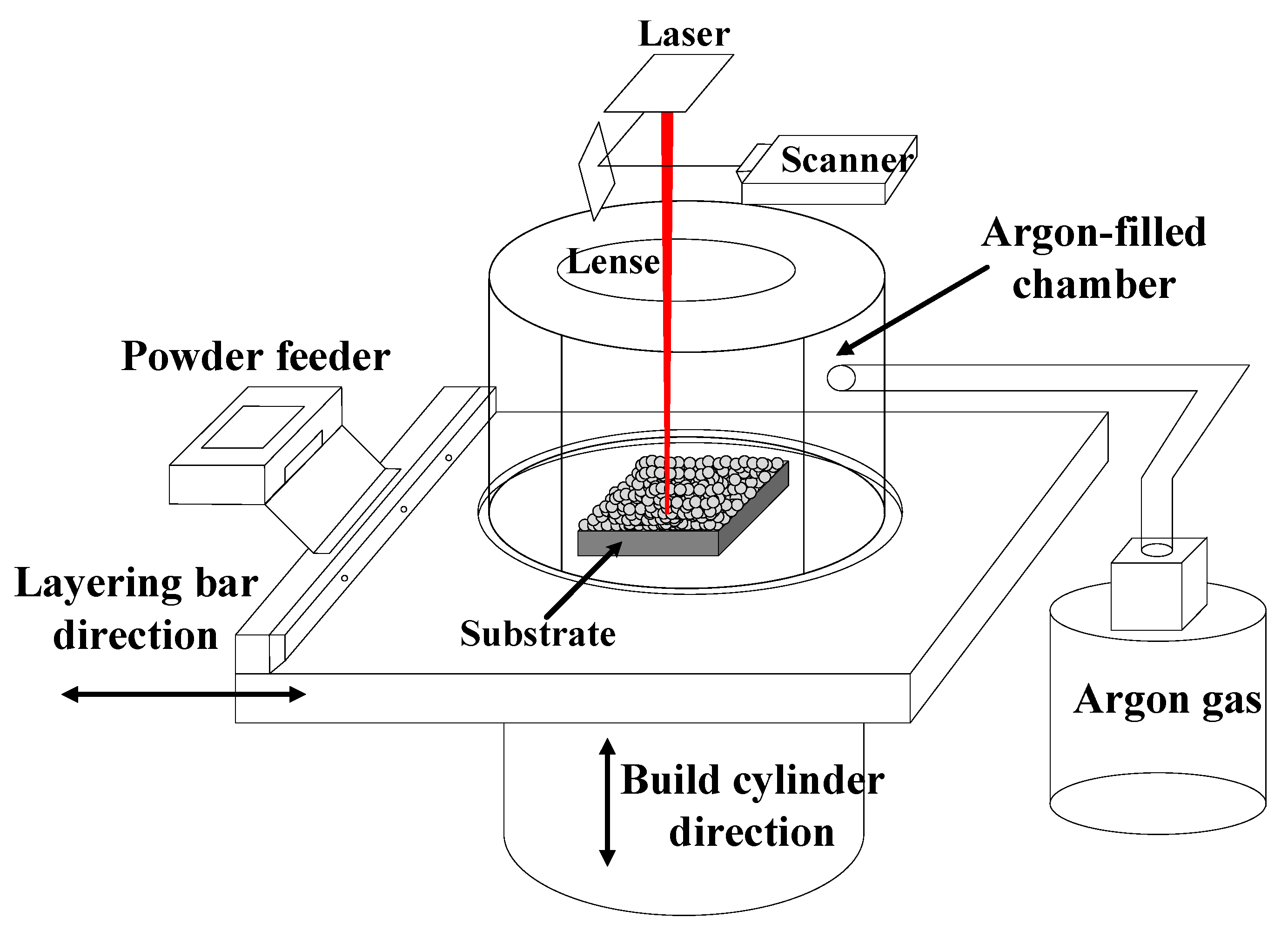
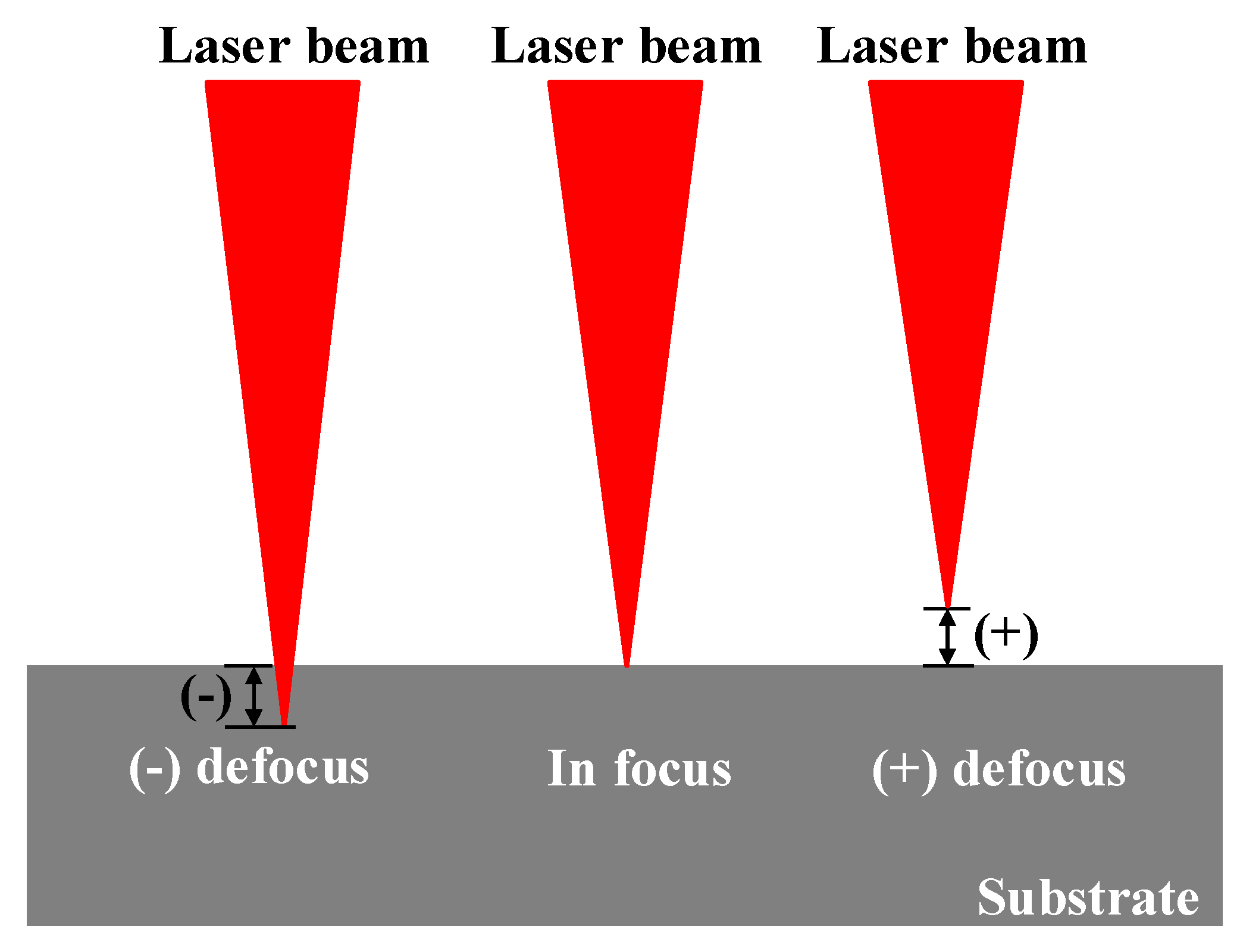
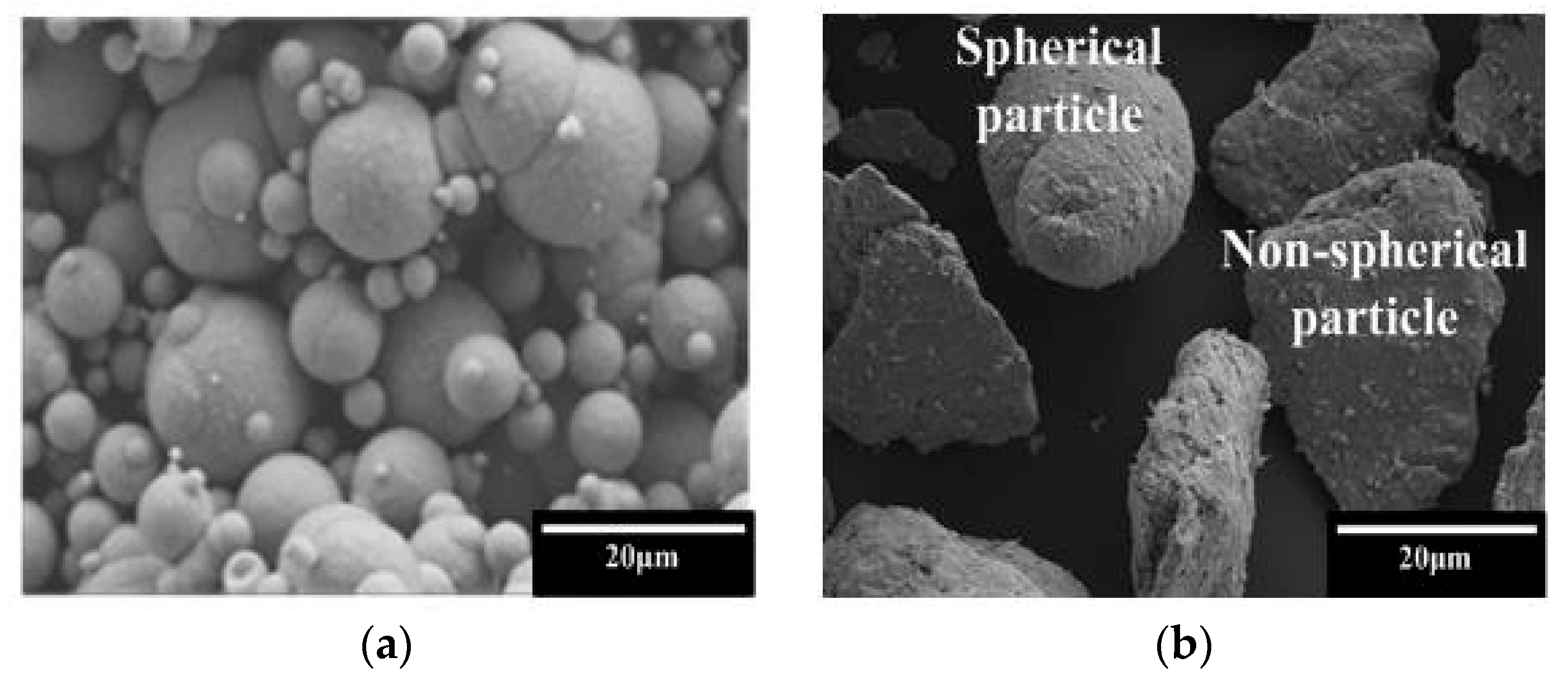
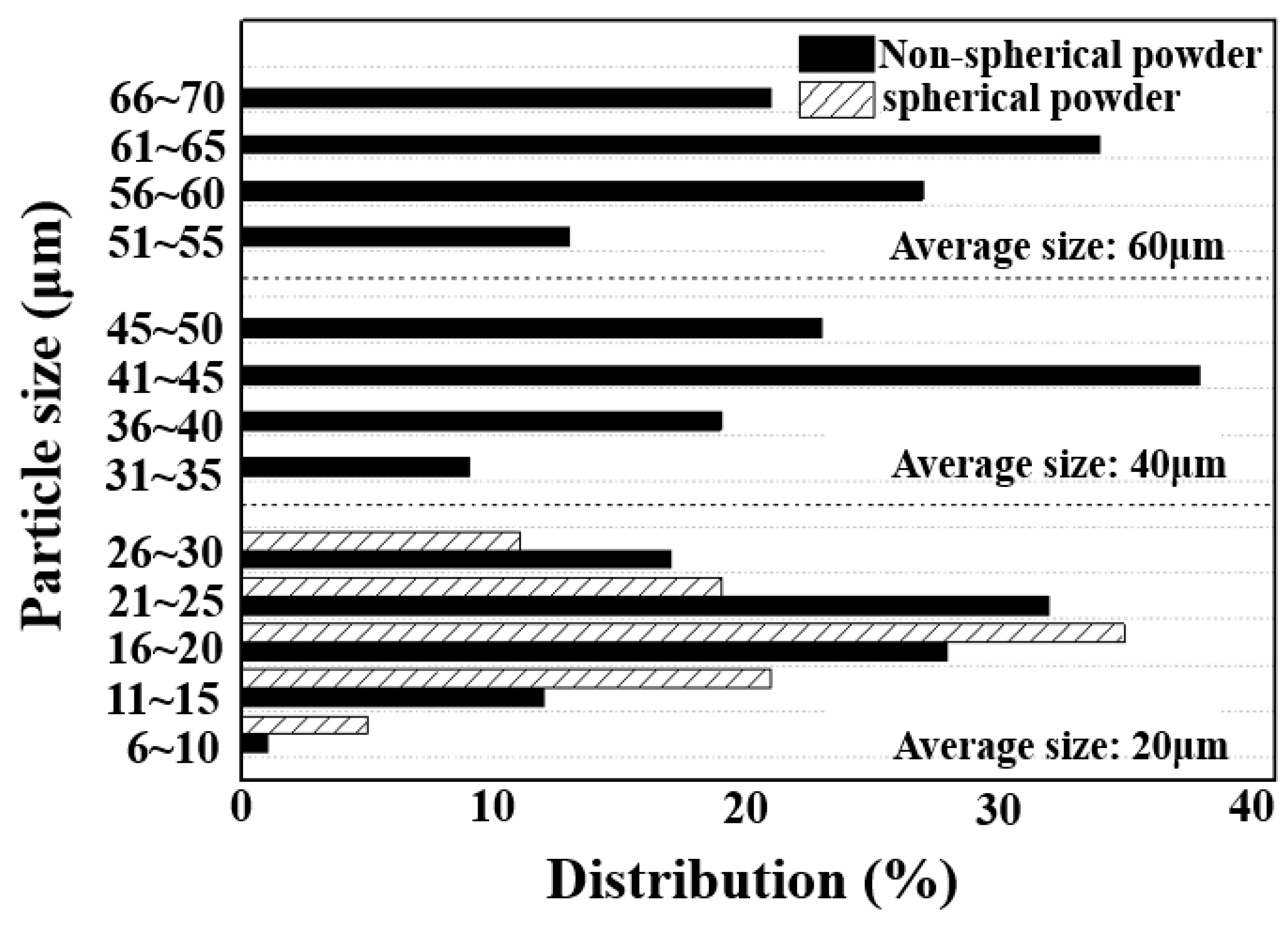
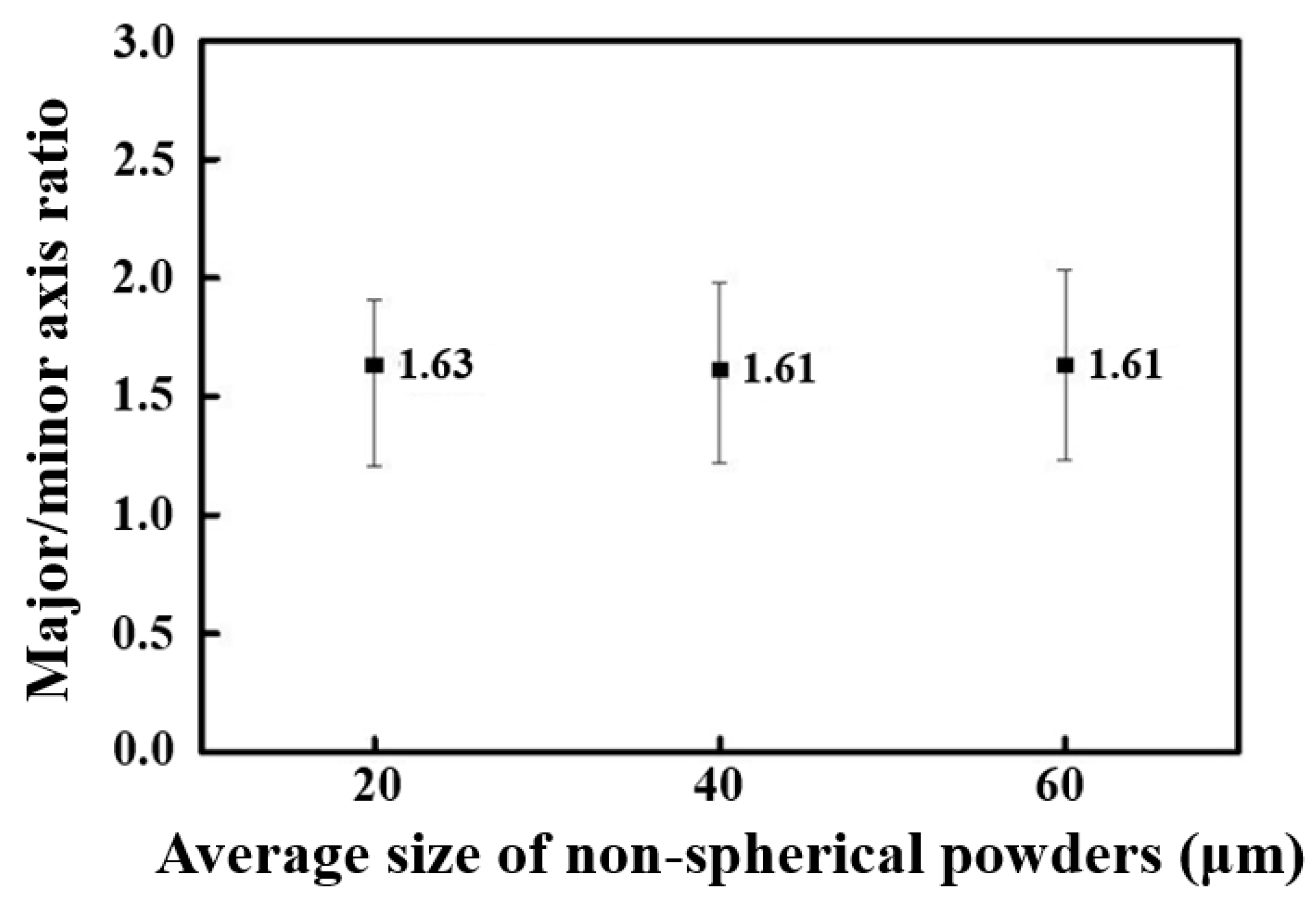
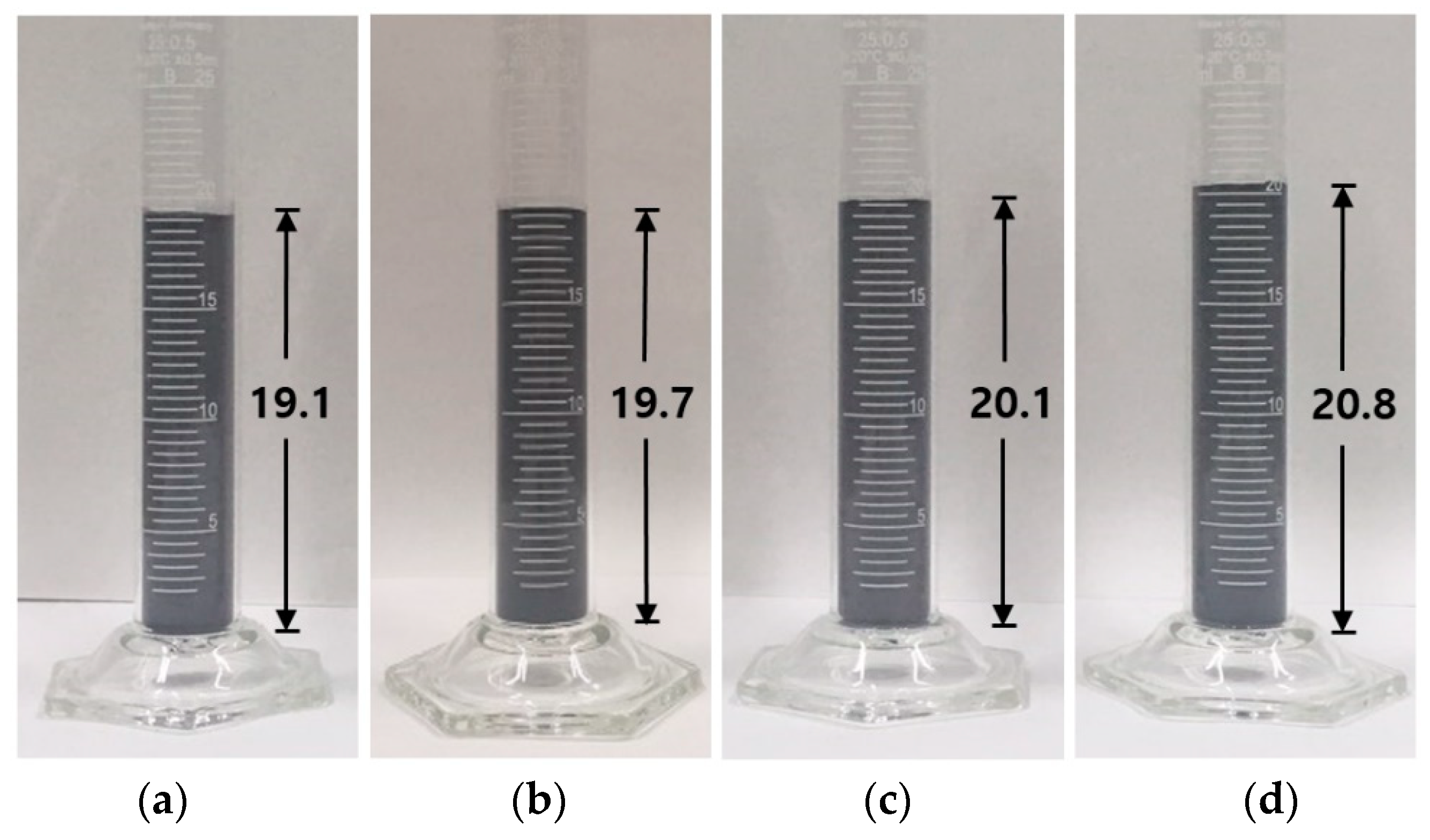
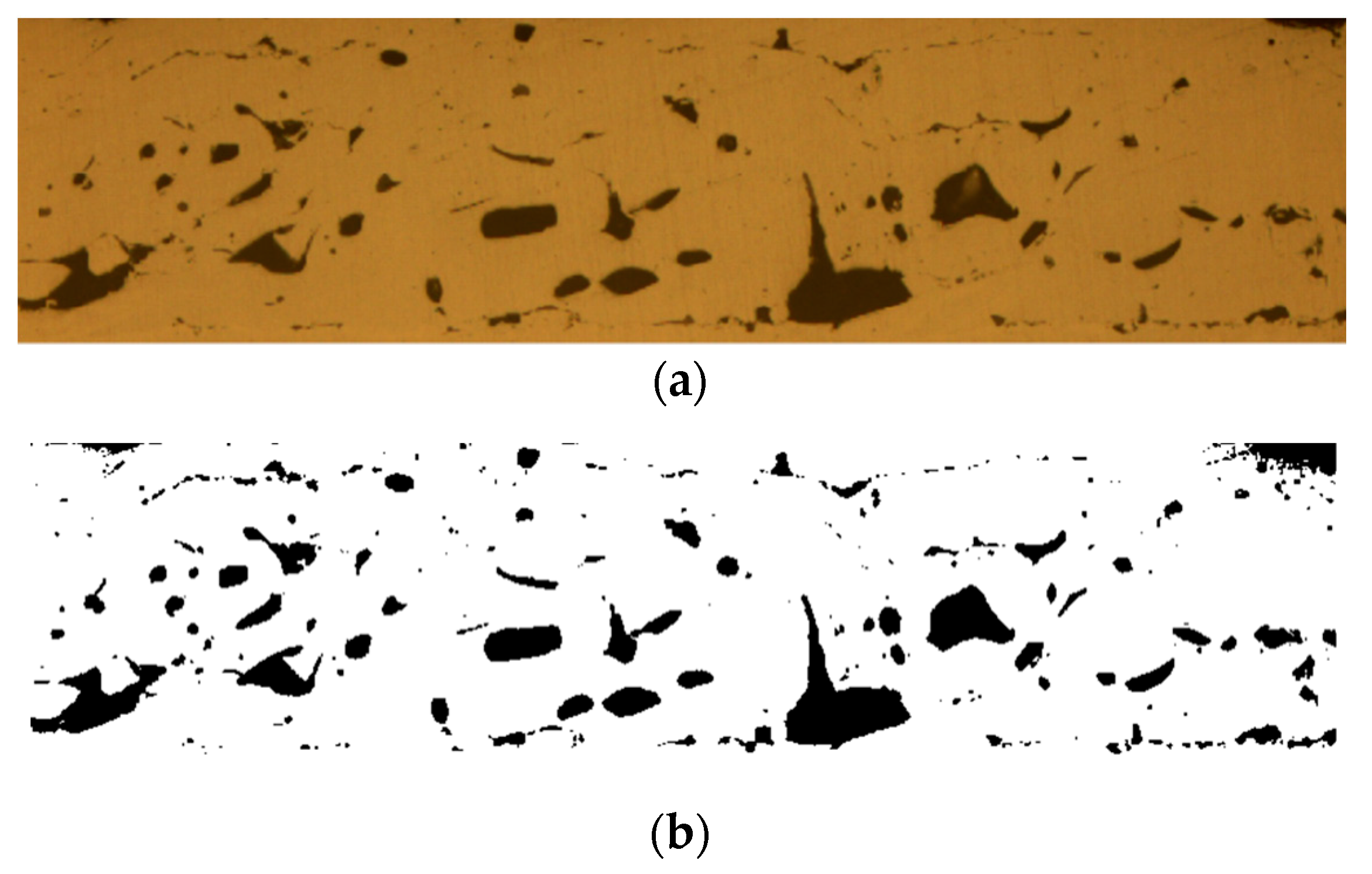
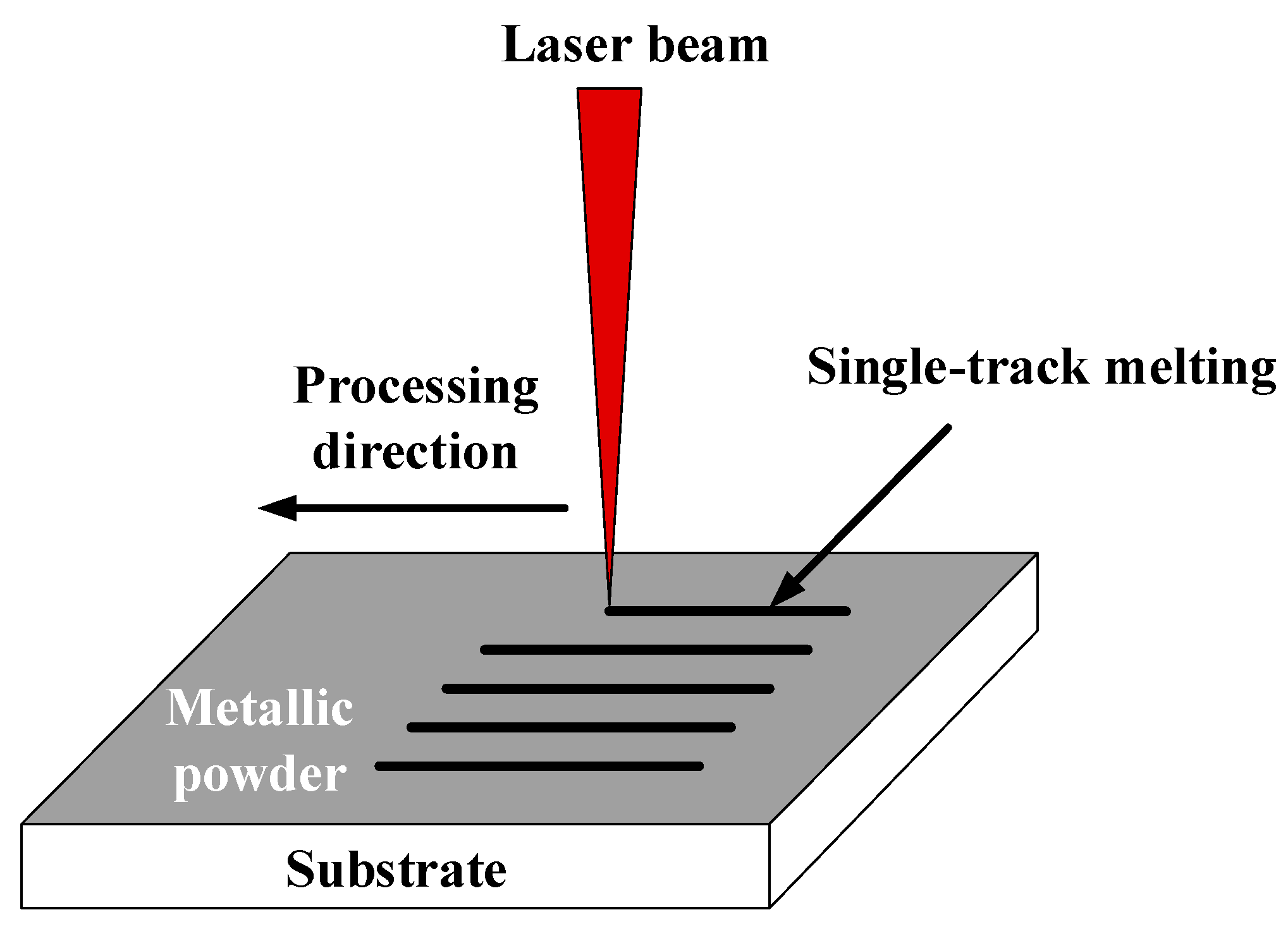

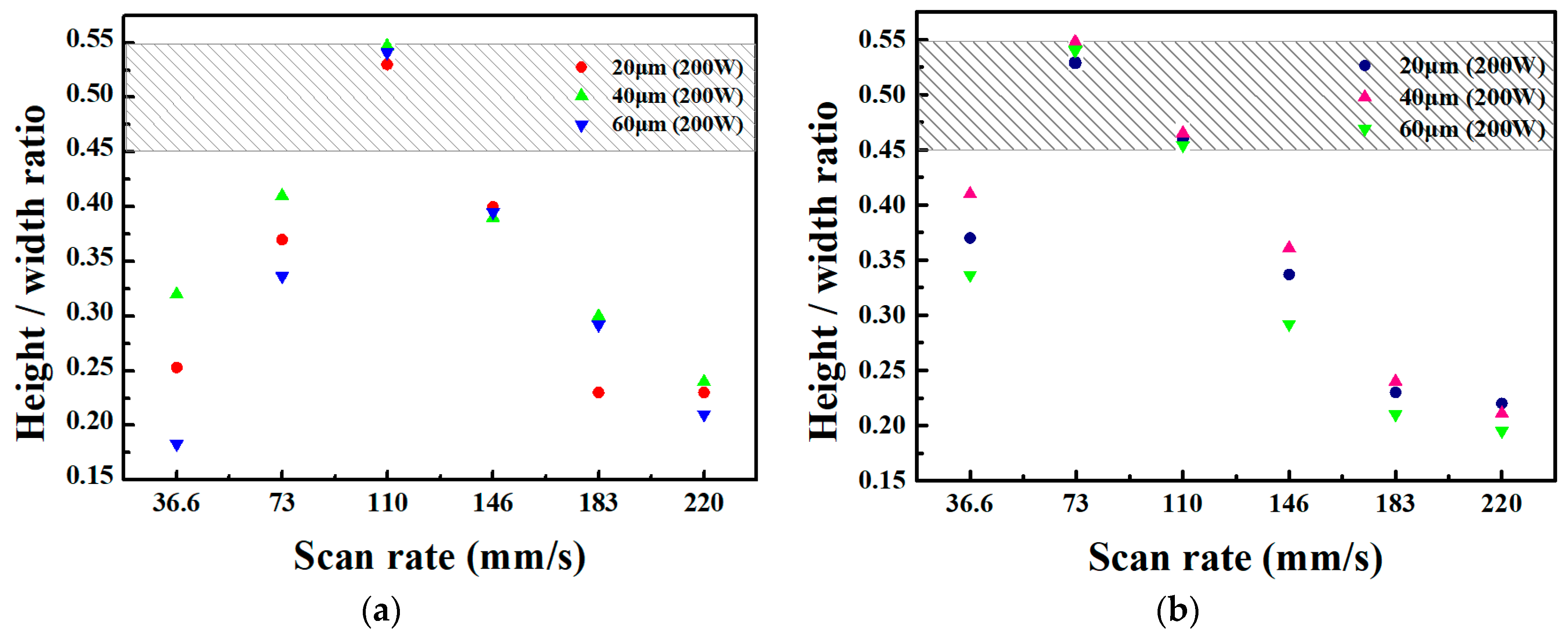

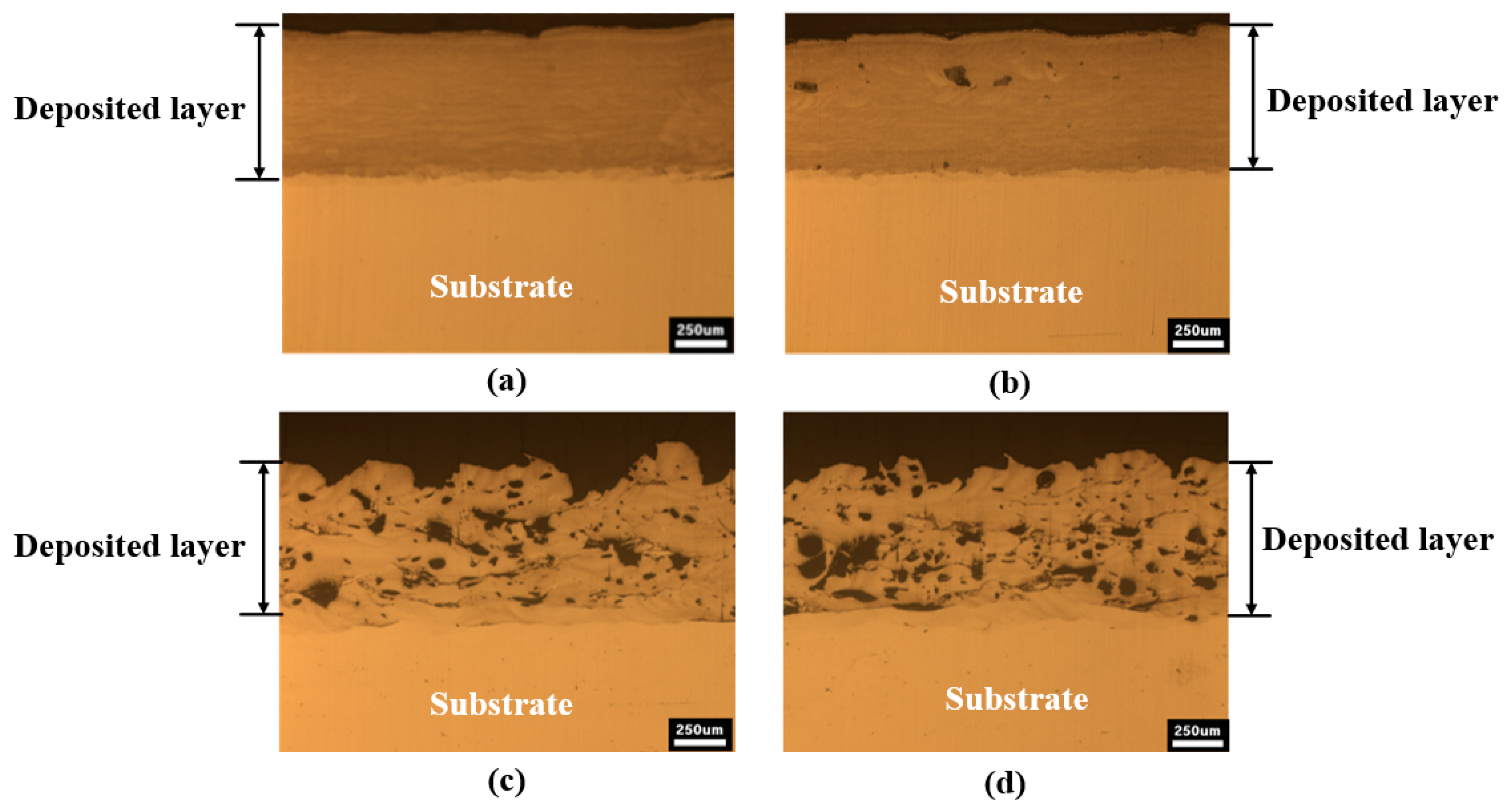

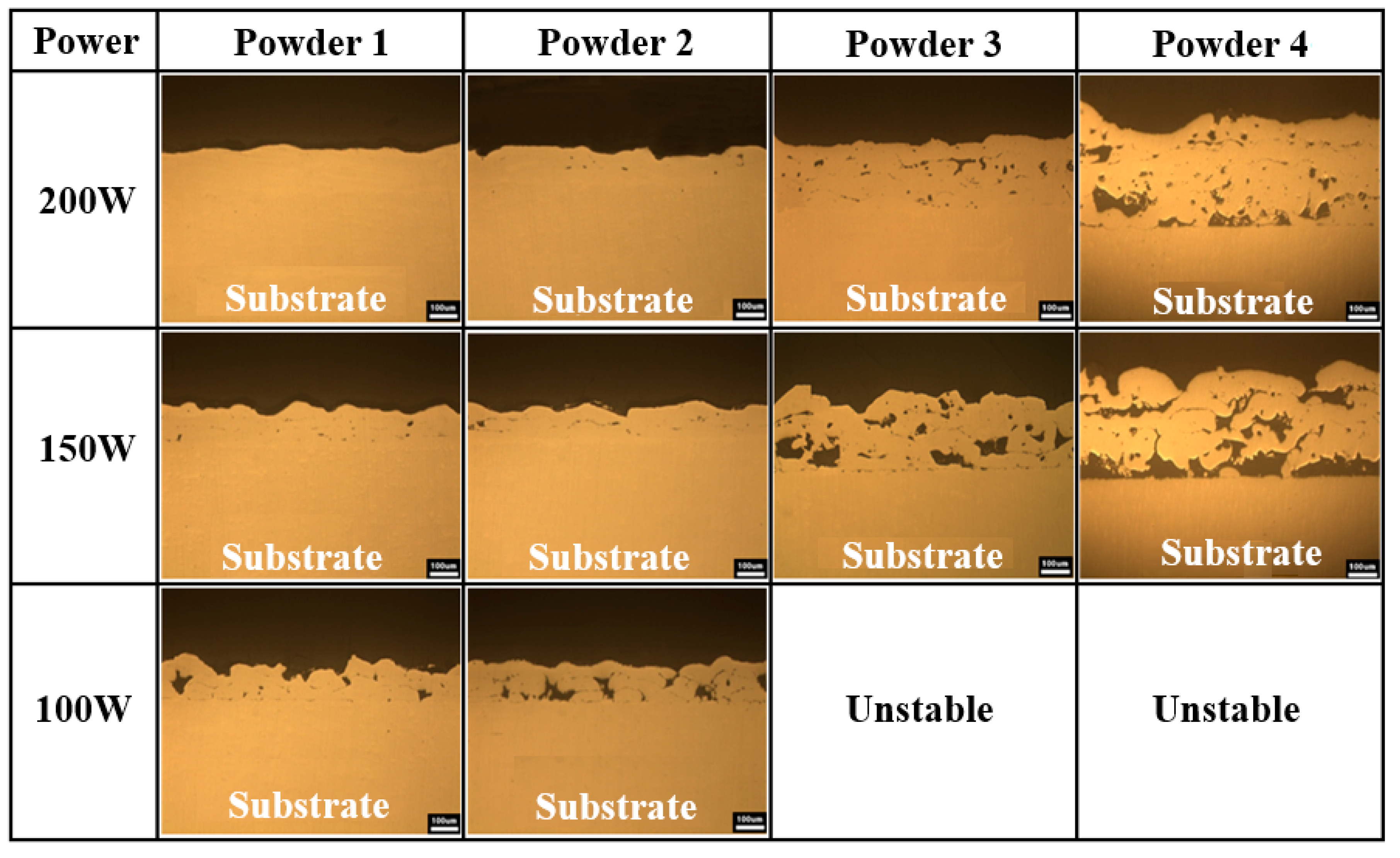
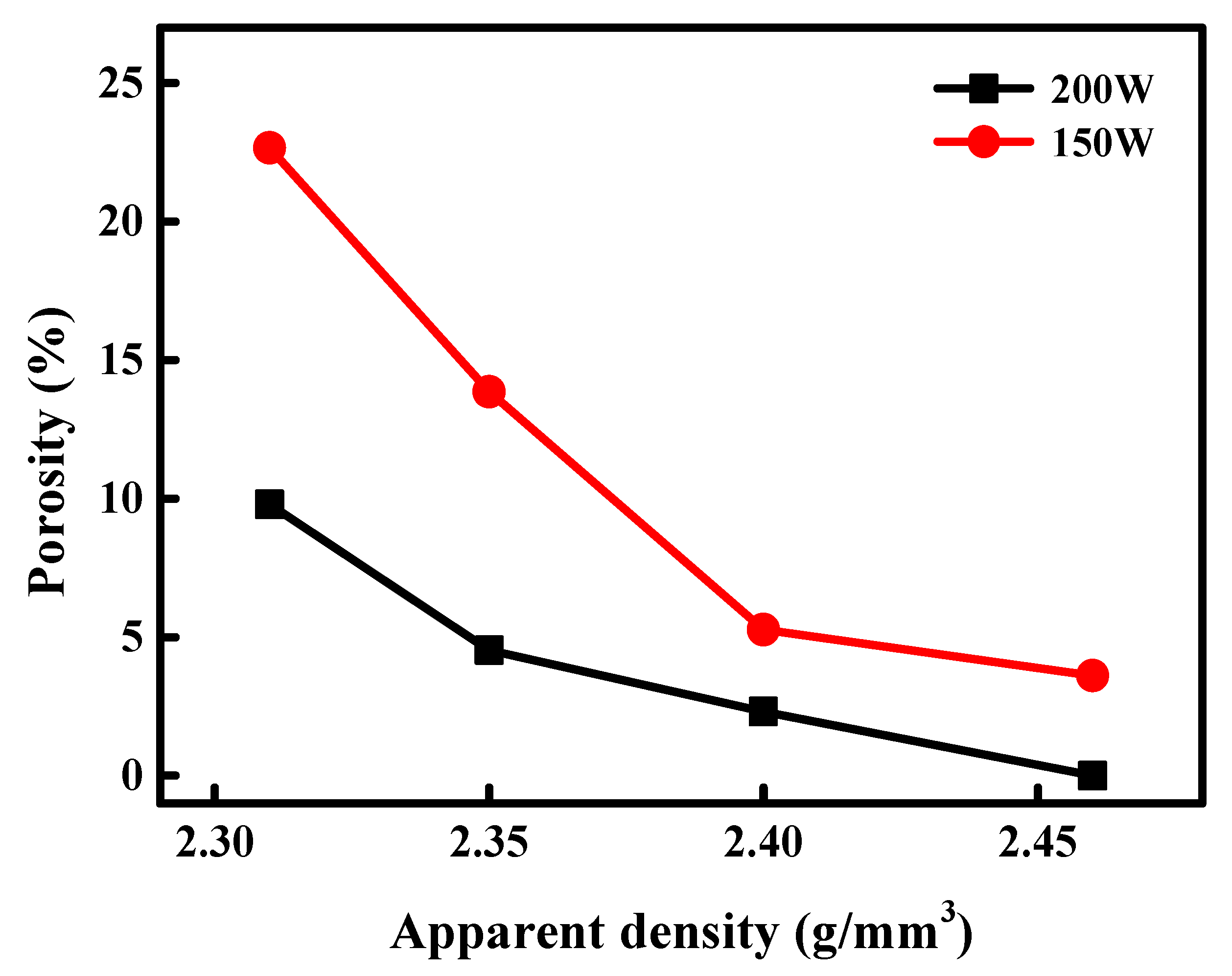

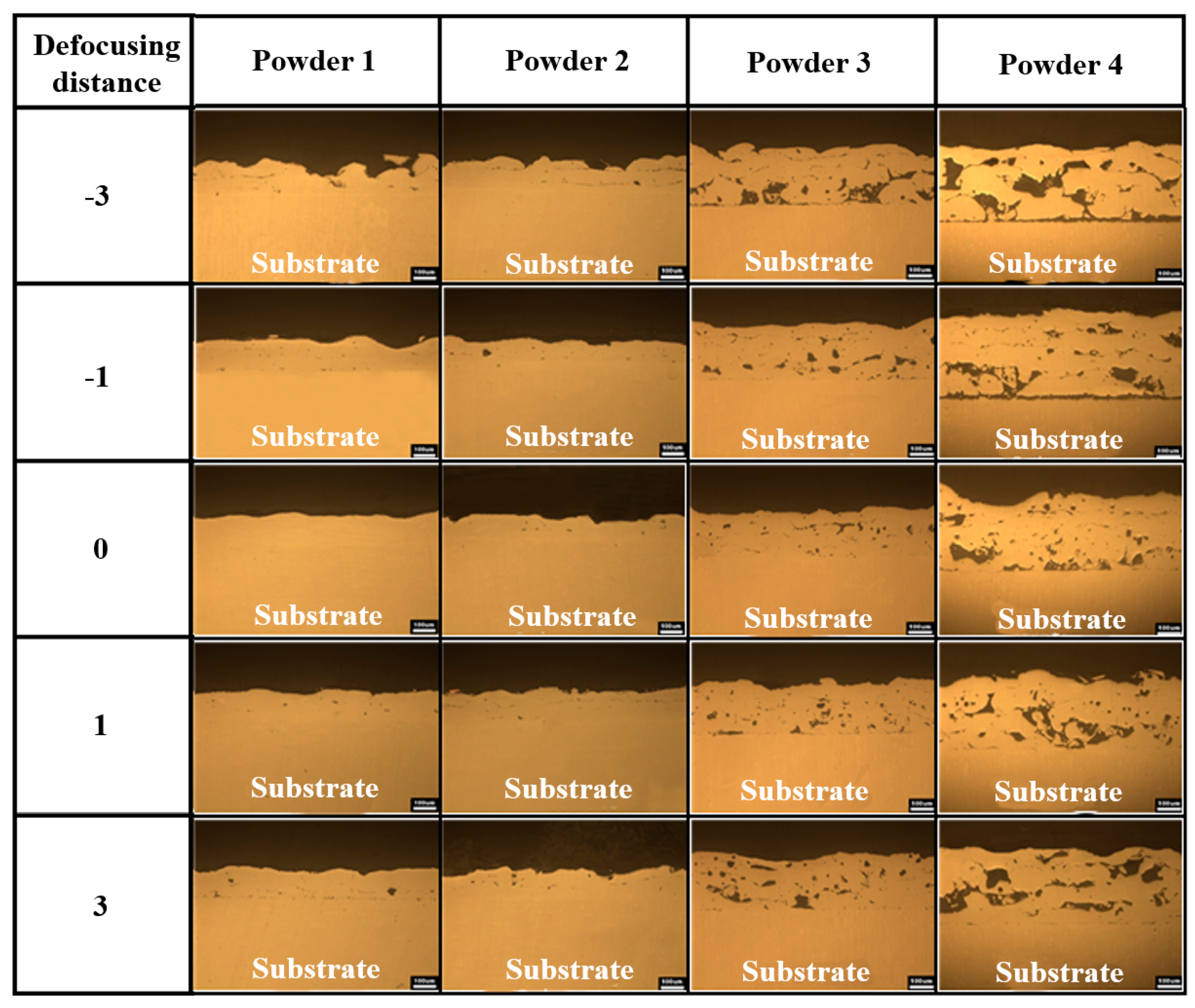

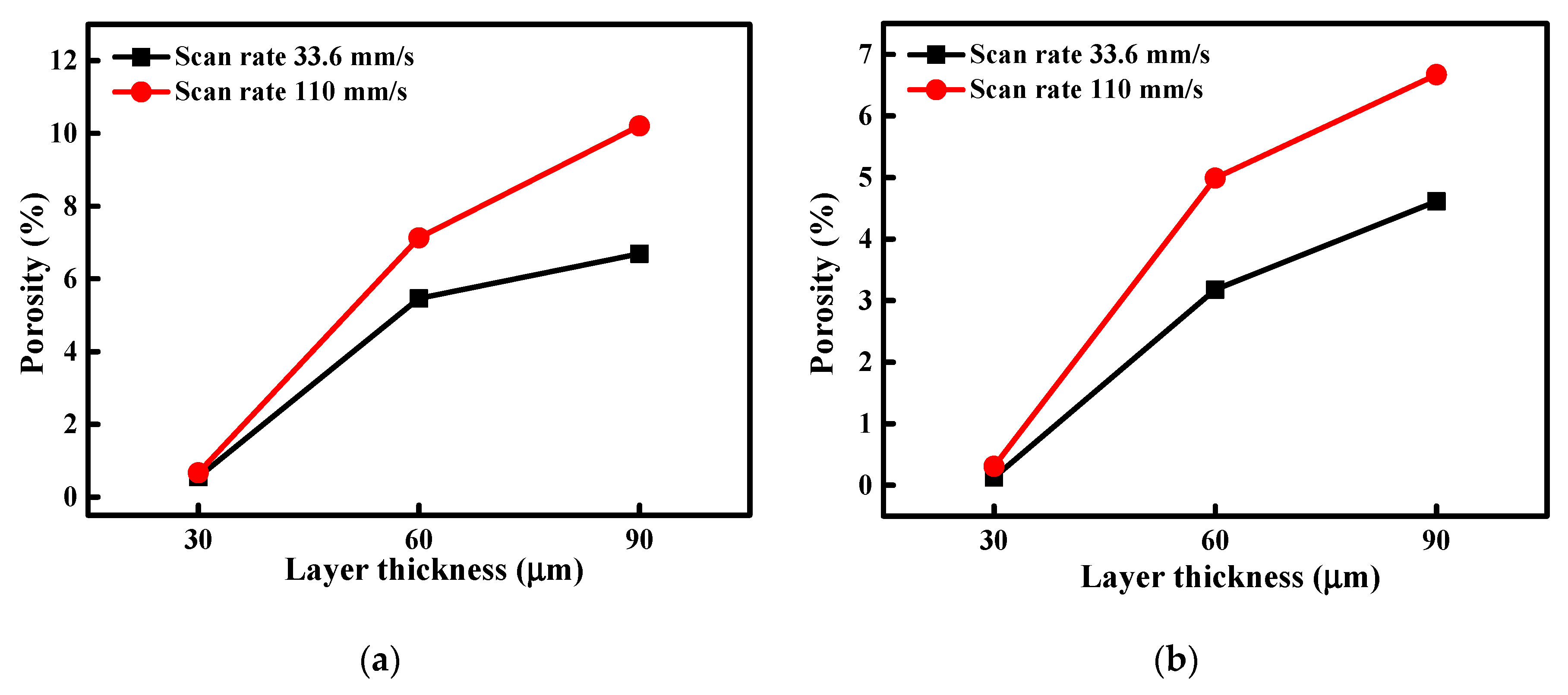

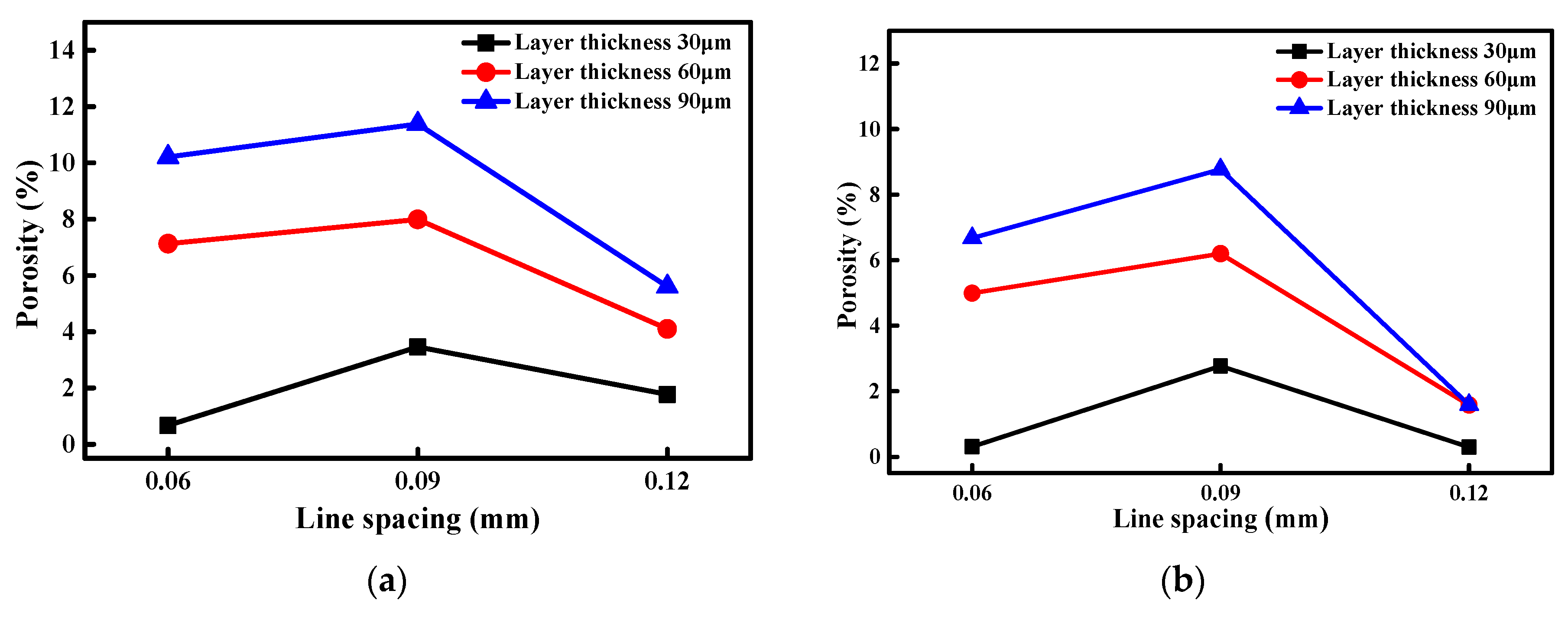
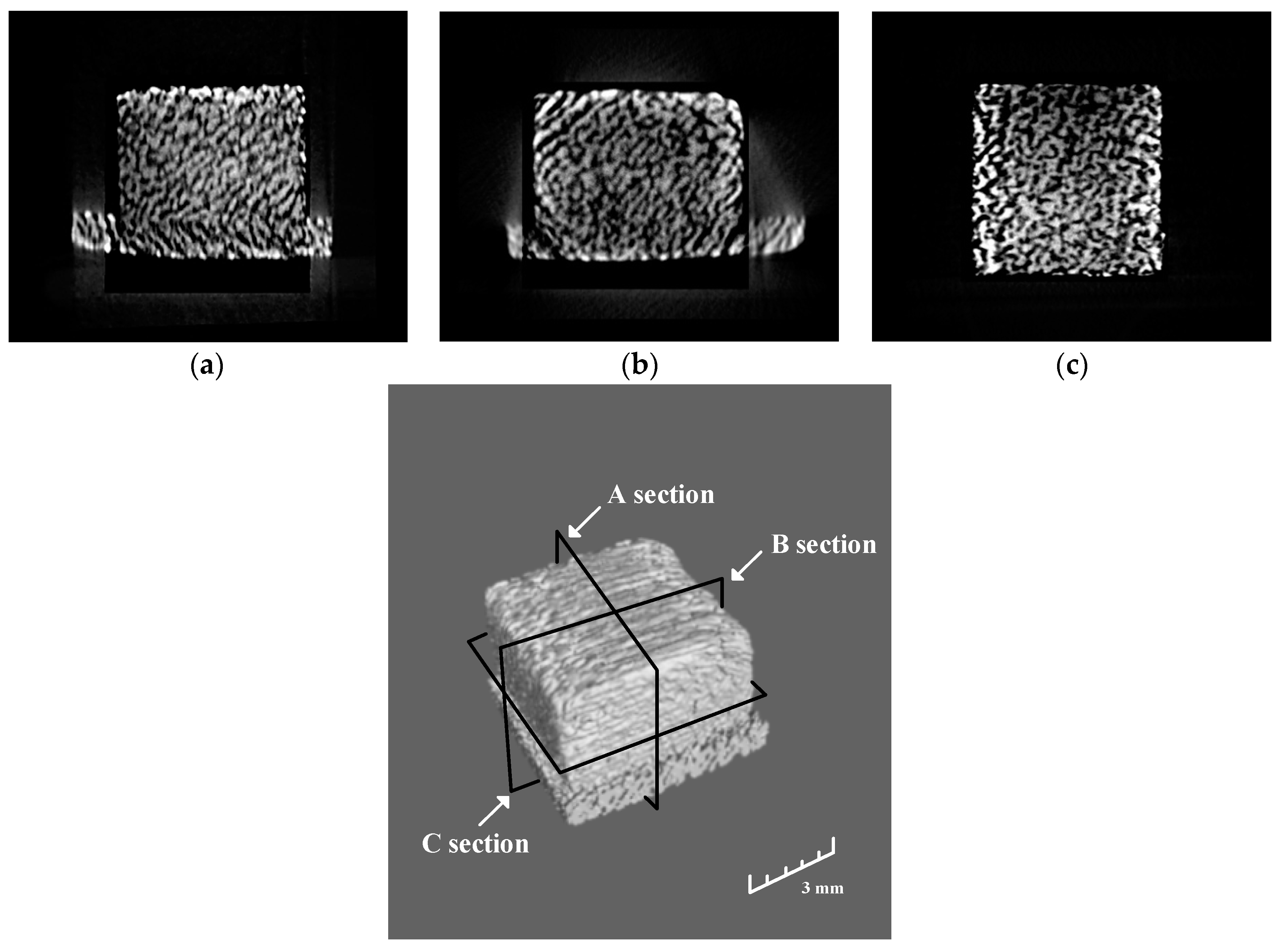
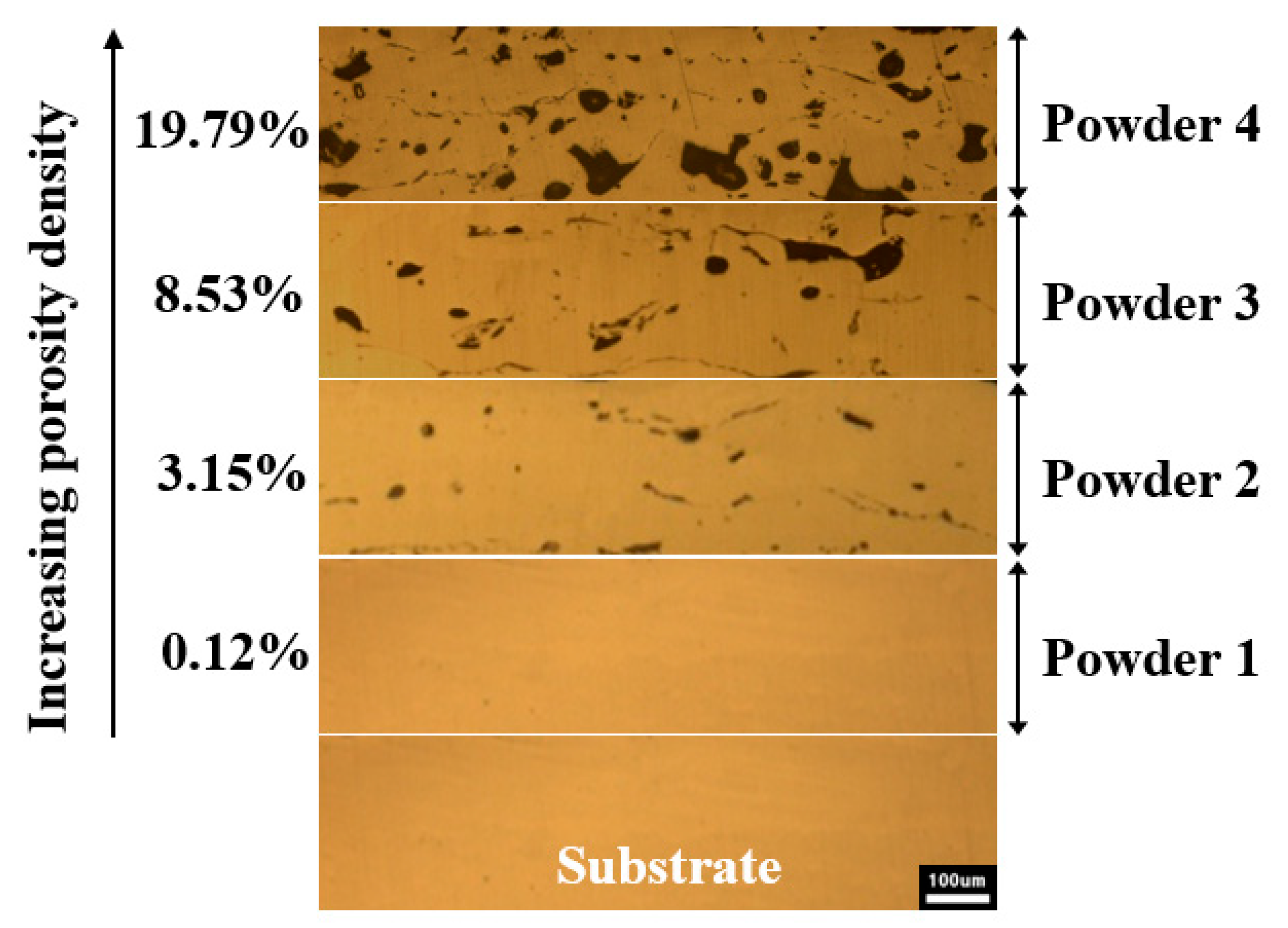
| Size of Spherical Powder (Mixing wt %) | Size of Non-Spherical Powder (Mixing wt %) | |
|---|---|---|
| Powder 1 | 20 μm (100%) | - |
| Powder 2 | 20 μm (50%) | 20 μm (50%) |
| Powder 3 | 20 μm (50%) | 40 μm (50%) |
| Powder 4 | 20 μm (50%) | 60 μm (50%) |
© 2018 by the authors. Licensee MDPI, Basel, Switzerland. This article is an open access article distributed under the terms and conditions of the Creative Commons Attribution (CC BY) license (http://creativecommons.org/licenses/by/4.0/).
Share and Cite
Jeon, T.J.; Hwang, T.W.; Yun, H.J.; VanTyne, C.J.; Moon, Y.H. Control of Porosity in Parts Produced by a Direct Laser Melting Process. Appl. Sci. 2018, 8, 2573. https://doi.org/10.3390/app8122573
Jeon TJ, Hwang TW, Yun HJ, VanTyne CJ, Moon YH. Control of Porosity in Parts Produced by a Direct Laser Melting Process. Applied Sciences. 2018; 8(12):2573. https://doi.org/10.3390/app8122573
Chicago/Turabian StyleJeon, Tae Jun, Tae Woo Hwang, Hye Jeong Yun, Chester J. VanTyne, and Young Hoon Moon. 2018. "Control of Porosity in Parts Produced by a Direct Laser Melting Process" Applied Sciences 8, no. 12: 2573. https://doi.org/10.3390/app8122573
APA StyleJeon, T. J., Hwang, T. W., Yun, H. J., VanTyne, C. J., & Moon, Y. H. (2018). Control of Porosity in Parts Produced by a Direct Laser Melting Process. Applied Sciences, 8(12), 2573. https://doi.org/10.3390/app8122573






